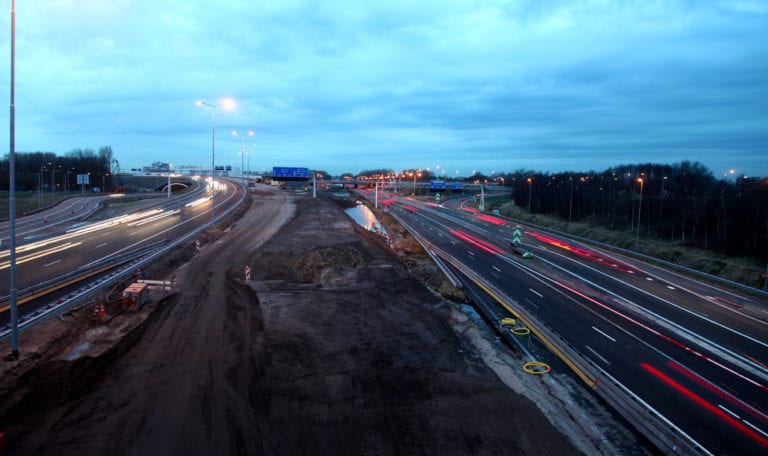After six years of planning, construction is underway on an ambitious $718-million venture to twin a large portion of Highway 104 in Nova Scotia. It is one of the largest infrastructure projects in the history of the province.
The thoroughfare is being twinned from Sutherlands River east of New Glasgow to Antigonish in the northeastern part of the province. It is part of the Trans-Canada Highway and a critical supply route in Nova Scotia.
Roadbuilding crews have started work on the first phase of the project. It involves cutting and putting down a new roadbed and surface as well as building infrastructure between Antigonish and James River.
The project includes 28 kilometres of new two-lane twinned highway and 10 kilometres of new four-lane twinned highway, along with two new interchanges and 24 new bridges. The completion date is scheduled for the end of 2023.
The highway will remain in operation while construction work is underway, further complicating the build. The plan is to first build the twinned portion of the highway and then flip traffic to the new segment to do the necessary repairs and repaving. Once the work is completed, all lanes on both segments will be opened.
Dexter Nova Alliance, led by local contractors Dexter Construction and Nova Construction, with BBGI as an equity partner, won the bid for the project last May after an extensive procurement and bidding process.
A Significant Project
Ken MacLean, vice-president of Dexter Nova Alliance, said he was looking forward to seeing work on the highway progress.
“This is a significant project that will have a positive impact on our province for decades to come. It will be built by Nova Scotia-based companies for Nova Scotians, and we are proud of that.”
The project has been in the works since 2015 when a review recommended the province to look at twinning a number of its 100-series highways to make them safer. Highway 104 is one of the deadliest roads in Nova Scotia. There have been 391 collisions, including 19 fatalities since 2009.
Bradley Cleary, P3 construction and operations manager for Nova Scotia, explained the province had chosen a public-private partnership for the build because it was a way to get the project done as quickly as possible.
“It’s been a dangerous stretch of highway for a long time, so it’s really a safety concern, and that’s one of the reasons that this alternative procurement method was selected for this project,” he said. “We are going to get it built quicker, and we can have a safer highway for the people of Nova Scotia.”
Cost of Construction
The project’s cost includes $364.3 million for actual construction and $196.4 million for ongoing operations and maintenance. It’s also going to cover a major upgrade of the existing stretch of highway during the 20-year operating period. Insurance, professional fees and financing and other costs make up the remainder.
The Canadian government is contributing $90 million to the project under the National Trade Corridors Fund. A feasibility study had considered tolls as a means to pay for the project, but the public rejected that idea.
Mitigating Effects on Wildlife
In building the highway, the Nova Scotia government is also, for the first time, attempting to minimize the impact such a venture has on native wildlife like moose, deer and turtles.
“We’re going to have three primary mammal crossings,” said Cleary. “In places where there’s bridges over water, we’re going to put a three-metre path on each side to allow for deer to cross. We’ll make sure that the deer don’t have to go up on the road. They can go underneath the bridge.”
Notably, 25 metres of fencing and tree cover will also be installed to guide animals to the underground crossing structures. One of the crossing structures will be built extra large to accommodate moose.
Nova Scotia Transportation and Infrastructure Renewal Minister Lloyd Hines believes the project will save lives and provide travellers and business with a high-quality highway for years to come.
“A safe and efficient highway system is essential to the economic and social well-being of Nova Scotia. Our partnership with Dexter Nova Alliance will deliver on that goal.”

Leave a Reply